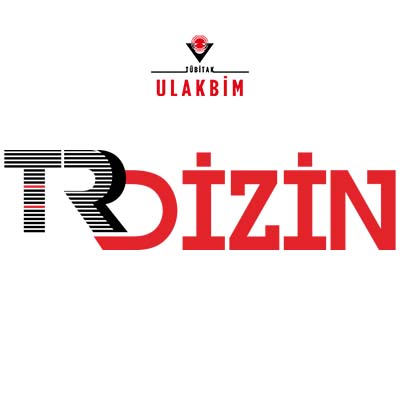An Interdisciplinary Perspective on the "Our Living Democracy" Learning Area in Social Studies
DOI:
https://doi.org/10.63556/ankad.v9i2.236Keywords:
Social studies, our living democracy, Drake and Burns, interdisciplinary.Abstract
Abstract
Interdisciplinary approaches to education have become increasingly significant, particularly in addressing complex social issues. In today’s world, the multidimensional nature of social and political phenomena is too intricate to be effectively analyzed within the confines of a single academic discipline. This complexity underscores the necessity for interdisciplinary methods, especially in understanding democratic processes within the context of Social Studies education. This study analyzes the “Our Living Democracy” learning area in the 5th-grade Social Studies curriculum through the lens of Drake and Burns’ (2004) Interdisciplinary Teaching Model. Document analysis of the 2024 Social Studies Curriculum—developed by the Turkish Ministry of National Education as part of the “Century of Türkiye” Educational Model—reveals that the “Our Living Democracy” unit is well-aligned with interdisciplinary instructional frameworks. The findings indicate that this learning area fosters democratic participation by presenting students with meaningful themes, supported by both vertically and horizontally integrated curriculum standards. Utilizing the KNOW/DO/BE framework, the curriculum successfully links knowledge, skills, and values, thereby nurturing students’ critical thinking and problem-solving abilities. The overarching goal is to develop socially responsible individuals who internalize democratic values. Within this framework, the interdisciplinary approach does not merely transmit theoretical content; rather, it enables students to connect learning with real-life contexts and generate practical solutions to social challenges. As such, it contributes to a deeper, more enduring, and meaningful educational experience.
The research findings indicate that this learning area promotes democratic participation by presenting meaningful themes to students through vertically and horizontally integrated standards. By employing the KNOW/DO/BE bridge, connections among knowledge, skills, and values have been established, fostering critical thinking and problem-solving skills, with the goal of cultivating responsible individuals who embrace democratic values. In this context, the interdisciplinary approach not only imparts theoretical knowledge but also equips them with the skills to apply this knowledge to everyday life and develop practical solutions, thereby providing a lasting and meaningful learning experience.
References
Aladağ, E. & Sert, C. (2020). Sosyal bilgiler 5. sınıf ders kitabının disiplinler arası yaklaşım açısından incelenmesi. Eğitim Kuram ve Uygulama Araştırmaları Dergisi, 6(3), 285-295. https://doi.org/10.38089/ekuad.2020.28
Barry, A. & Born, G. (2013). Interdisciplinarity: Reconfigurations of the social and natural sciences. Routledge. https://doi.org/10.4324/9780203584279
Beane, J. A. (1997). Curriculum integration: Designing the core of democratic education. Teachers College Press.
Breslin, T. (2023). Rethinking citizenship education for political literacy. H. Tam (Ed.), Who’s afraid of political education? The challenge to teach civic competence and democratic participation içinde (ss. 64-80). Policy Press. doi: https://doi.org/10.51952/9781447366997.ch005
Drake, S. M. & Burns, R. (2004). Meeting standards through integrated curriculum. Association for supervision and curriculum development.
Gürkan, B. & Doğanay, A. (2016). Sosyal bilgiler dersinde disiplinler arası öğretim yaklaşımına dayalı analoji tekniği uygulamalarının kavram gelişimine etkisi: Bir durum çalışması. Turkish Studies International Periodical for the Languages, Literature and History of Turkish or Turkic, 11(19), 395-416. http://dx.doi.org/10.7827/TurkishStudies.9861
Jacobs, H. H. & Borland, J. H. (1986). The interdisciplinary concept model: Theory and practice. Gifted Child Quarterly, 30(4), 159-163. Erişim tarihi: 01.09.2024 https://journals.sagepub.com/doi/abs/10.1177/001698628603000403
Keçe, M. & Merey, Z. (2011). İlköğretim sosyal bilgiler kazanımlarının sosyal bilimler disiplinlerine ve disiplinlerarası anlayışa uygunluğunun belirlenmesi. Yüzüncü Yıl Üniversitesi Eğitim Fakültesi Dergisi, 8(1), 110-139. Erişim tarihi: 20.09.2024 https://dergipark.org.tr/en/pub/yyuefd/issue/13707/165954
Klein, J. T. (1990). Interdisciplinarity: History, theory, and practice. Wayne State University Press.
Millî Eğitim Bakanlığı. (2024). Sosyal Bilgiler Öğretim Programları. Ankara.
Nowotny, H., Scott, P., & Gibbons, M. (2001). Re-thinking science: Knowledge and the public in an age of uncertainty. Polity Press.
Öztürk, C. (2009). Sosyal bilgiler: Toplumsal yaşama disiplinlerarası bir bakış. C. Öztürk (Ed.), Sosyal bilgiler öğretimi içinde (ss. 1-31). Pegem Akademi.
Sağdıç, M. (2019). Türkiye’de sosyal bilgiler eğitiminde disiplinlerarası öğretim yaklaşımının tarihsel gelişimi. Journal of History Culture and Art Research, 8(2), 390-403. https://doi.org/10.7596/taksad.v8i2.2121
Scott, E. K. & White, B. R. (2024). An empirical study of cultivating innovative practice abilities in an interdisciplinary education environment in Australia. Research and Advances in Education, 3(5), 53-63. https://doi.org/10.56397/RAE.2024.05.06
Spelt, E. J. H., Biemans, H. J. A., Tobi, H., Luning, P. A., & Mulder, M. (2009). Teaching and learning in interdisciplinary higher education: A systematic review. Educ Psychol Rev, 21, 365-378. https://doi.org/10.1007/s10648-009-9113-
Şimşek, A. (2008). Tarih derslerinde bütünsel öğrenme: Gestaltçı yaklaşımdan holistik yaklaşıma bir bakış denemesi. Uluslararası İnsan Bilimleri Dergisi, 5(2), 1-16. Erişim tarihi: 15.09.2024 https://arastirmax.com/en/system/files/dergiler/161047/makaleler /5/2/ arastrmx_161047_5_pp_1-16.pdf
Strathern, M. (2004). Commons and borderlands: Working papers on interdisciplinarity, accountability and the flow of knowledge. Sean Kingston Publishing.
Turan, S. (2019). 2018 Sosyal bilgiler öğretim programının disiplinlerarası yapısının incelenmesi. Journal of Innovative Research in Social Studies, 2(2), 166-190. Erişim tarihi: 15.09.2024 https://dergipark.org.tr/en/download/article-file/904670
Turan, S. (2020). Teachers' views on the use of inter-disciplinary approach in social studies. International Journal of Field Education, 6(1), 141-163. Erişim tarihi: 15.09.2024 https://dergipark.org.tr/en/download/article-file/1173424
Ürey, M., Çepni, S., & Kaymakçı, S. (2015). Fen temelli ve disiplinlerarası okul bahçesi programının bazı sosyal bilgiler öğretim programı kazanımları üzerine etkisinin değerlendirilmesi. Uludağ Üniversitesi Eğitim Fakültesi Dergisi, 28(1), 7-29. Erişim tarihi: 10.09.2024 https://dergipark.org.tr/en/download/article-file/153574
Yıldırım, A. (1996). Disiplinlerarası öğretim kavramı ve programlar açısından doğurduğu sonuçlar. Hacettepe Üniversitesi Eğitim Fakültesi Dergisi, 12(12), 89-94. Erişim tarihi: 12.09.2024 https://dergipark.org.tr/en/download/article-file/88151
Downloads
Published
How to Cite
Issue
Section
License
Copyright (c) 2025 Journal of Anatolian Cultural Research (JANCR)

This work is licensed under a Creative Commons Attribution-NonCommercial 4.0 International License.










